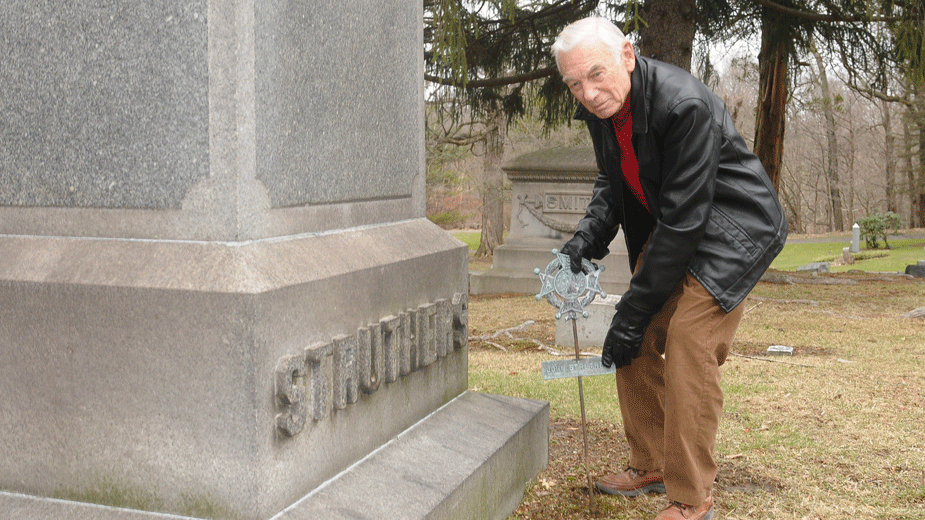Our Towns: John Struthers Bought Land Here in 1798
STRUTHERS, Ohio — In April of 1798, Revolutionary War veteran Turhand Kirtland set out on a seven-month odyssey across the new American frontier to the west. Kirtland was a land agent and surveyor for the Connecticut Land Co., which in 1795 had bought three million acres in the Connecticut Western Reserve – today northeastern Ohio.
This land extended south from just west of modern-day Cleveland to the Akron area, and then east toward the Pennsylvania line, encompassing what would become Youngstown and Warren and Boardman and Poland townships. The company’s objective was to sell parcels to settlers in the East who were eager to make a new start in the West.
According to his diary, published in 1903, the Connecticut-born Kirtland set off first to northwestern Pennsylvania, then moved south through the Reserve, not only surveying land but also marketing what he surveyed to would-be buyers.
On Aug. 29, 1798, he found one. “I went with [John] Struthers and explored two lots at Mill seat and sold them to him,” he wrote that day in an entry.
In October, Kirtland came to collect, per his diary:
Tuesday, Oct. 9 – Went to Pittsburg [sic] to breakfast and from that across the Monongahela to Cannonsburg, seventeen miles, to John Struthers, to receive money due the company for two lots sold him in No. 1 for Mill place.
Wednesday, Oct. 10 – I was obliged to stay at Struthers waiting for the money to be collected.
Thursday, Oct. 11 – I set out for home.
This deal marks the cornerstone of what became Struthers, Ohio, says Ted Heineman, a local historian who has published a blog with biographical sketches related to Riverside Cemetery in Poland.
Struthers, part of the Revolutionary War generation who sought to make a new life in the West, served in the Virginia militia during the war and had moved to Canonsburg, Pa., in 1775, Heineman says. In 1799, Struthers, his wife, Mary Foster Struthers – the aunt of composer Stephen Foster – and their four children moved to their newly acquired 400 acres in Poland Township. It was here that Struthers made improvements to a dam and gristmill Kirtland started, Heineman says. The Struthers family had four other children between 1803 and 1809.
Kirtland himself moved to Poland in 1800 and enjoyed a life in law, state politics and business, Heineman says.
But Struthers’ lasting legacy is his foray into the region’s iron business, Heineman says. In the early 19th century – sometime between 1801 and 1805, Dan and James Heaton established the first blast furnace in Ohio along Yellow Creek. Later in the decade, the Eaton brothers – they had since dropped the “H” from their name – sold the furnace to Robert Montgomery who later brought Struthers in as a partner.
“In many ways, he was a co-founder of the region’s steel industry,” Heineman says. The enterprise operated smoothly and profitably until the outbreak of war with the British in 1812. Struthers and his son Alexander both joined the war effort.
“He came back, but his son did not,” Heineman says. Alexander was killed during the battle of Fort Mackinac and when Struthers returned, he discovered that his business was in shambles. “He was a captain in the militia during the war and when he came home, his property and business were in ruins,” he says. He ended up losing the lands he purchased from Kirtland in 1798.
“He was more or less bankrupt and had to start all over again,” Heineman says. In 1819, more tragedy befell Struthers when his wife, Mary, died, and in 1827, two of his daughters drowned in the Mahoning River. John Struthers died in 1845 and was buried in the cemetery next to the Poland Presbyterian Church with his wife and daughters.
The city of Struthers was yet to be carved out of Poland Township. That task was left to Struthers’ son, Thomas, who attended Washington and Jefferson College in Washington, Pa. In a letter to Thomas Jefferson dated Aug. 15, 1824, classmate Ira Taylor found it necessary to write the former president about the college named in his honor and included a list of faculty and students there. Thomas Struthers is registered as a sophomore.
Thomas rose through the ranks in business and law, settling in Warren County, Pa., Heineman says. “He became very rich in both the railroad and the oil business,” he says. “He made millions.”
In 1865, in a gesture to his family, Thomas purchased the land his father lost during the War of 1812 and helped plot out a new town along Yellow Creek. “He named it Struthers, in honor of his father,” Heineman says.
In 1902, the area was incorporated as the village of Struthers. In 1920, Struthers attained city status as the population exploded to feed the need for workers in the region’s thriving steel industry.
Pictured: Ted Heineman shows where John Struthers is buried in the graveyard next to the Poland Presbyterian Church.
Copyright 2024 The Business Journal, Youngstown, Ohio.



